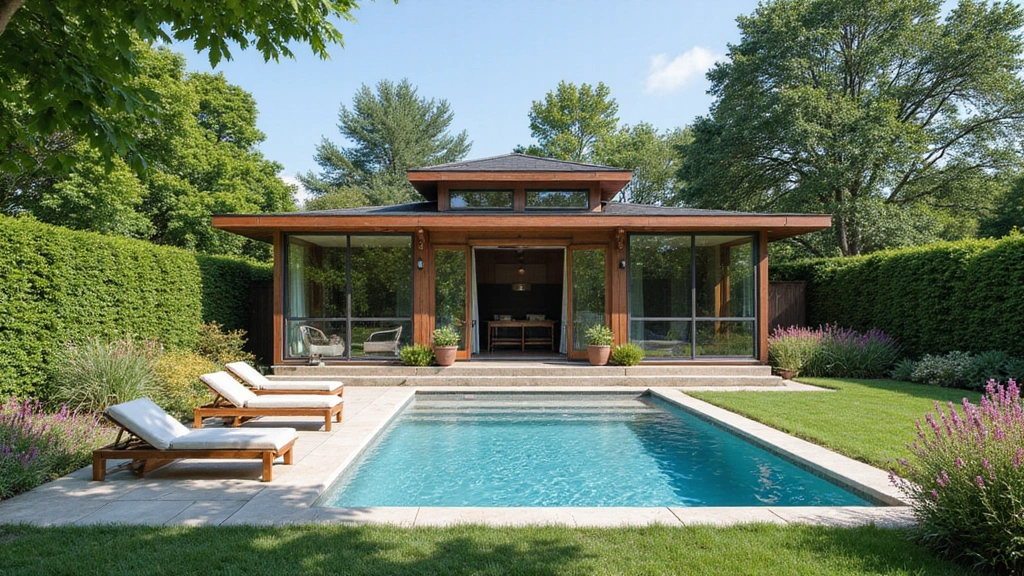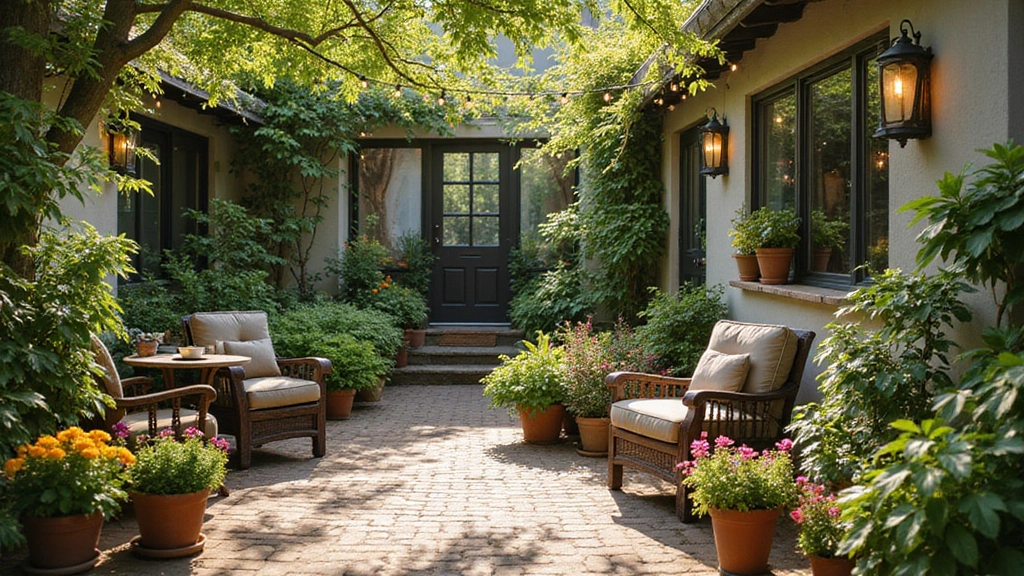
Imagine stepping out onto a cozy patio, surrounded by lush greenery and vibrant flowers, all flourishing in a compact setting.
A fresh patio garden can breathe life into your small outdoor space, transforming it into a serene retreat.
With clever planning and a sprinkle of creativity, you can cultivate a blossoming garden that fills your area with color and fragrance. Let’s embark on this delightful journey of turning your tiny patio into a garden paradise!
1. Choose the Right Plants for Small Spaces
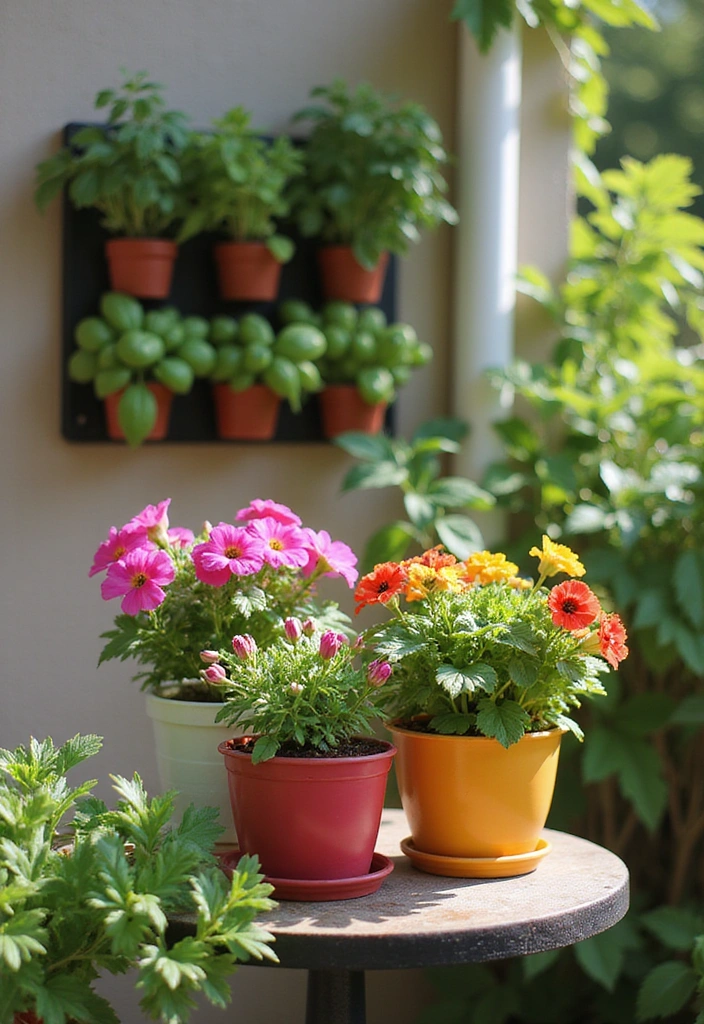
Selecting the right plants can make or break your patio garden. In small spaces, it’s crucial to pick plants that won’t outgrow their pots or crowd your area.
Focus on compact varieties that add character without overwhelming your space. Think colorful flowers like petunias or geraniums, and consider herbs such as basil or rosemary that not only look beautiful but are also practical.
Grouping plants by their sunlight and water needs can create a harmonious environment. Consider vertical gardening options like wall planters to maximize your space.
Don’t forget about seasonal plants; they can add vibrant colors that change as the seasons do, keeping your garden fresh and exciting.
Tips:
– Mix different heights of plants to create visual interest.
– Use trailing plants to soften edges and add depth.
– Select plants with varying bloom times for continuous color.
For your plant selection, seek out:
– Lavender plants for fragrance.
– Miniature roses for classic beauty.
– Succulents for low maintenance.
Getting the right plants sets the foundation for your patio paradise!
2. Utilize Vertical Space Wisely
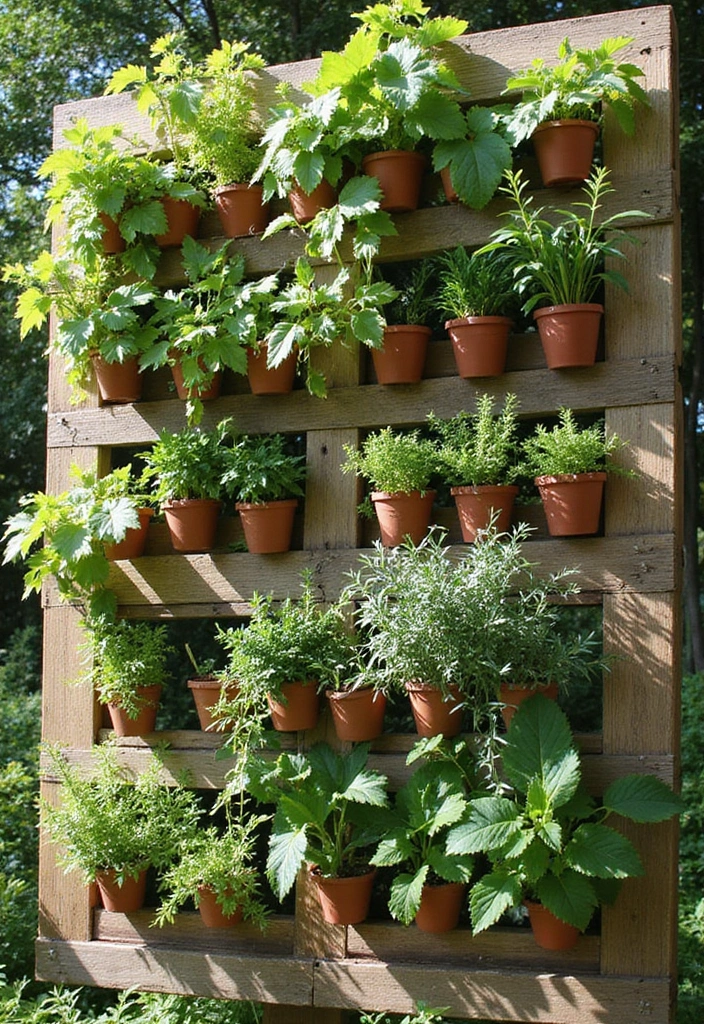
In small patios, going vertical is a game changer. By utilizing walls or railings, you can add more greenery without taking up precious ground space.
Install shelves or wall-mounted planters to display your plants creatively. This not only adds layers and depth but also catches the eye in a unique way. Vertical gardens can be made from repurposed materials like old pallets or hanging shoe organizers filled with soil and plants.
Using climbing plants like sweet peas or morning glories on trellises can transform bare walls into a stunning green canvas.
Consider adding hooks or shelves for hanging plants, which creates a lovely cascading effect. This allows for more variety and brings your patio garden to life.
Don’t forget:
– Choose lightweight containers for easy rearranging.
– Use drip trays to protect surfaces from water spills.
– Ensure that the vertical structures can support the plants as they grow.
These tips will help your garden flourish, utilizing every nook and cranny, while creating a lush oasis.
3. Create Intimate Seating Areas
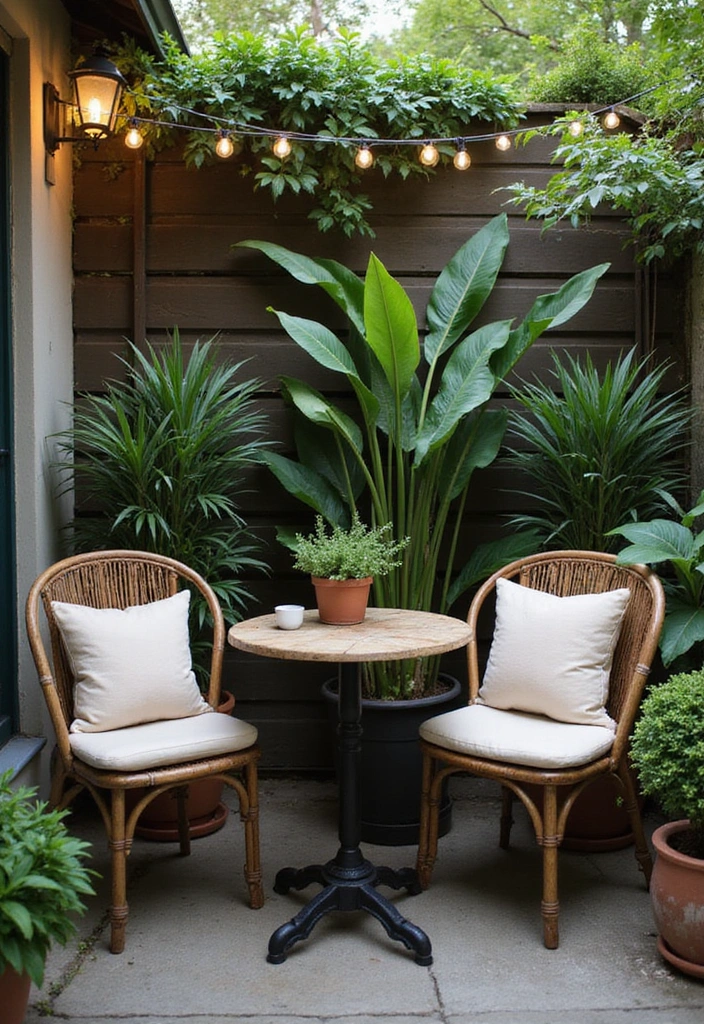
A patio garden isn’t just for plants; it’s also about the experience. Creating an intimate seating area can invite you to relax and enjoy your green paradise.
Consider a small bistro table with a couple of chairs or a cozy bench tucked in a corner surrounded by flowering plants. Use cushions and throws to add comfort and a splash of color.
If you have room, a hammock or a hanging chair can create a whimsical escape. Surround the seating with fragrant plants like jasmine or mint to enhance your sensory experience.
Lighting can also make a huge difference; string lights or lanterns can set the mood for evening gatherings.
Remember:
– Choose weather-resistant furniture for longevity.
– Add small decorative elements like candles or lanterns for warmth.
– Position the seating to take advantage of the best views of your garden.
This personal touch will make your patio not just a garden, but a place where you can unwind and enjoy life.
4. Incorporate Colorful Planters
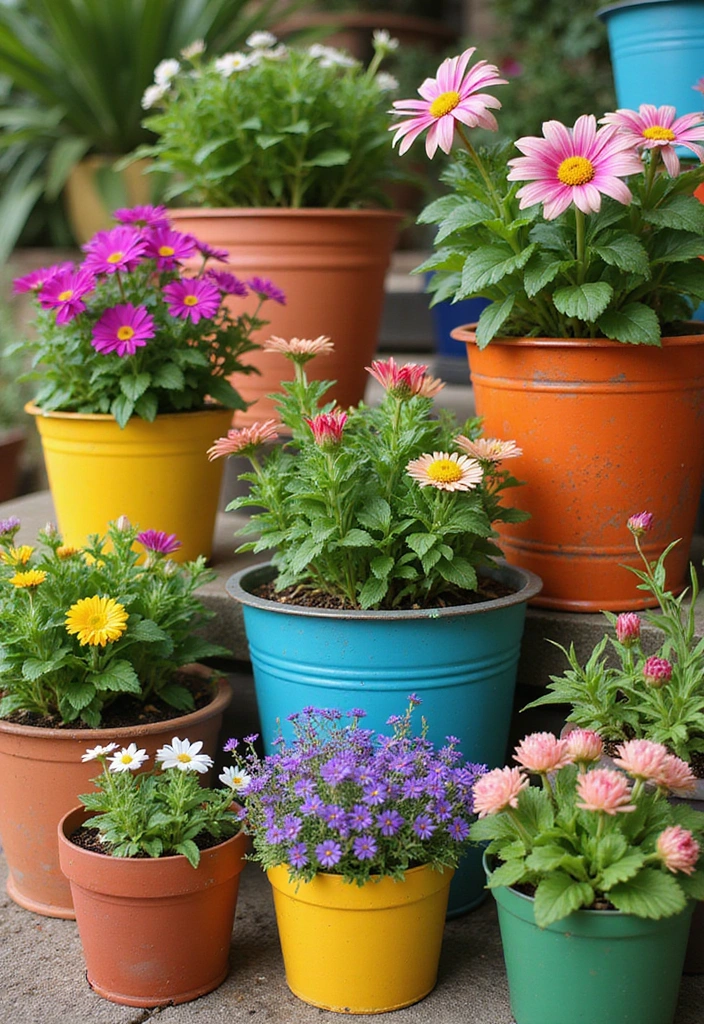
Planters are your best friends in a patio garden, especially in small spaces! Choosing the right planters can add a pop of color and personality to your garden.
Mix and match different materials like ceramic, metal, or terracotta for an eclectic look. Colorful pots can bring life to your greenery and make your space feel more vibrant.
Consider using varying heights and shapes to create a dynamic display. You could even paint old containers to give them new life, adding a creative touch to your garden.
Don’t shy away from themed planters—like rustic wooden boxes or sleek modern designs; they can enhance your garden’s overall aesthetic.
Some tips include:
– Ensure your planters have good drainage to keep plants healthy.
– Use self-watering pots for low maintenance.
– Group similar colors or styles for a cohesive look.
A well-designed planter selection can be the cherry on top of your fresh patio garden.
5. Add a Water Feature
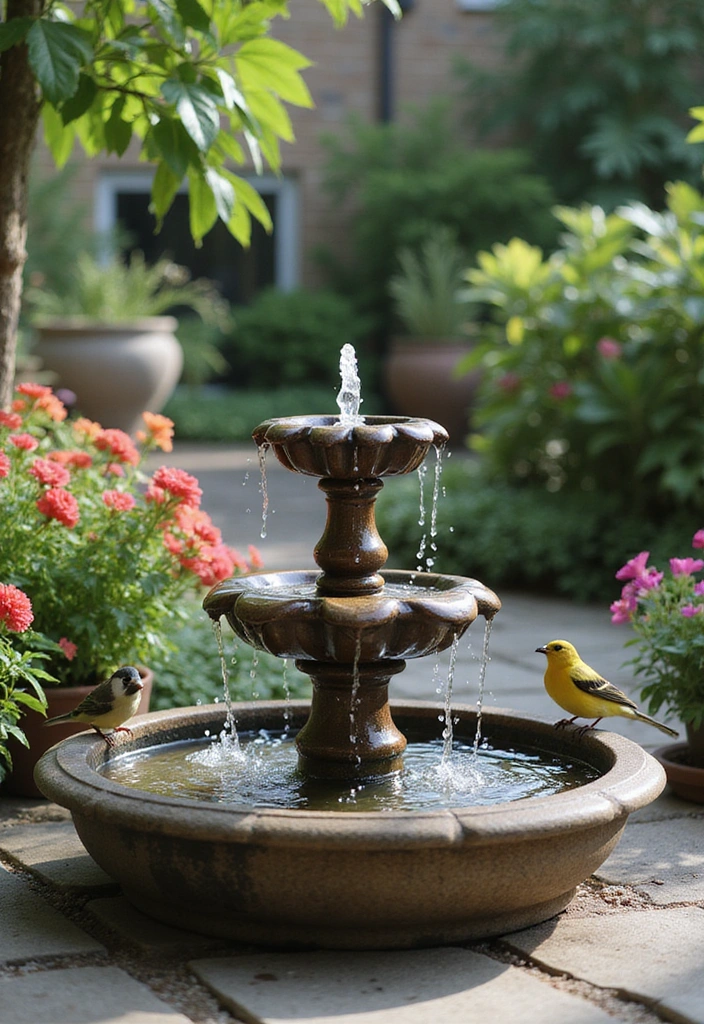
Water features can elevate your patio garden from simple to spectacular. The soothing sound of trickling water not only creates a peaceful ambiance but also attracts birds and other wildlife.
If space allows, consider a small fountain or even a pond. For tighter areas, tabletop water fountains can still offer that calming effect without taking up much space.
Aquatic plants like water lilies can also be incorporated if you opt for a pond. Additionally, you can use a small, decorative birdbath to invite local birds while adding a decorative element.
Some tips to consider include:
– Ensure any water feature has the right pump for circulation.
– Use solar-powered options for energy efficiency.
– Regularly clean your water feature to prevent algae growth.
A water feature transforms your garden into a tranquil retreat, providing a perfect spot for relaxation.
6. Use Natural Dividers
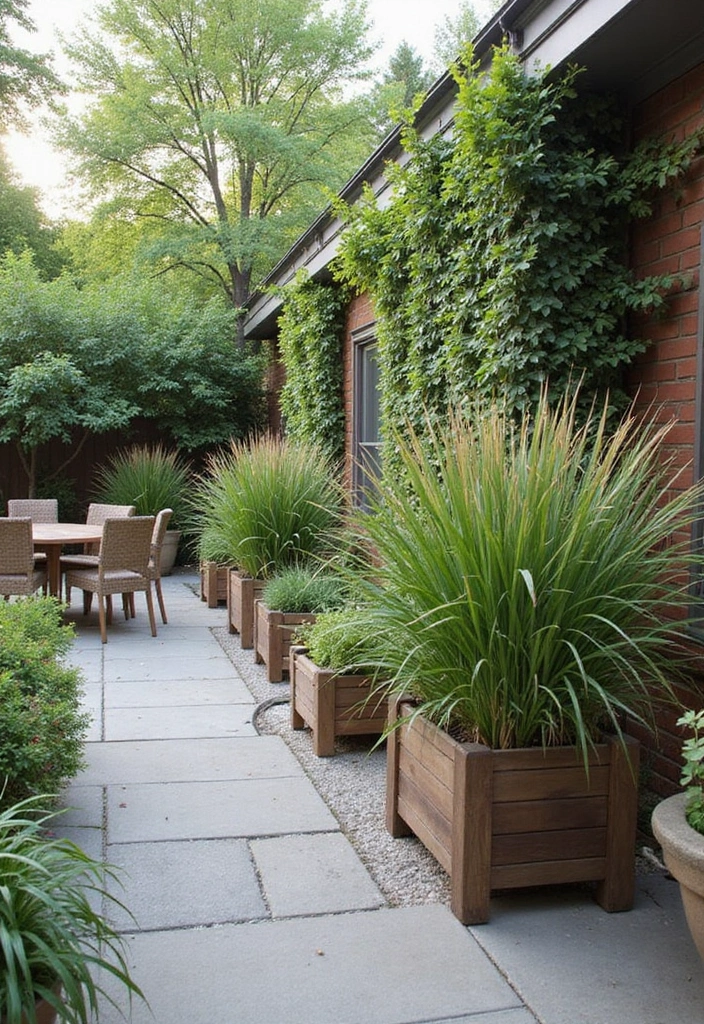
Creating distinct areas in your patio garden can be achieved beautifully with natural dividers. Using plants or trellises to separate sections makes your space feel larger and more organized.
Consider tall planters filled with ornamental grasses or privacy hedges that can provide a natural barrier. This can define seating areas, dining spots, or even grilling zones without the bulk of traditional dividers.
Even fragrant herbs can act as both dividers and additions to your garden’s usability. Choose plants that resonate with you—whether it’s the scent of lavender or the look of tall sunflowers.
Remember these tips:
– Ensure the dividers complement your overall design.
– Mix heights for visual interest.
– Use lightweight materials for easy rearrangement.
Natural dividers can turn your patio into a series of cozy nooks, inviting discovery and relaxation.
7. Incorporate Edible Plants
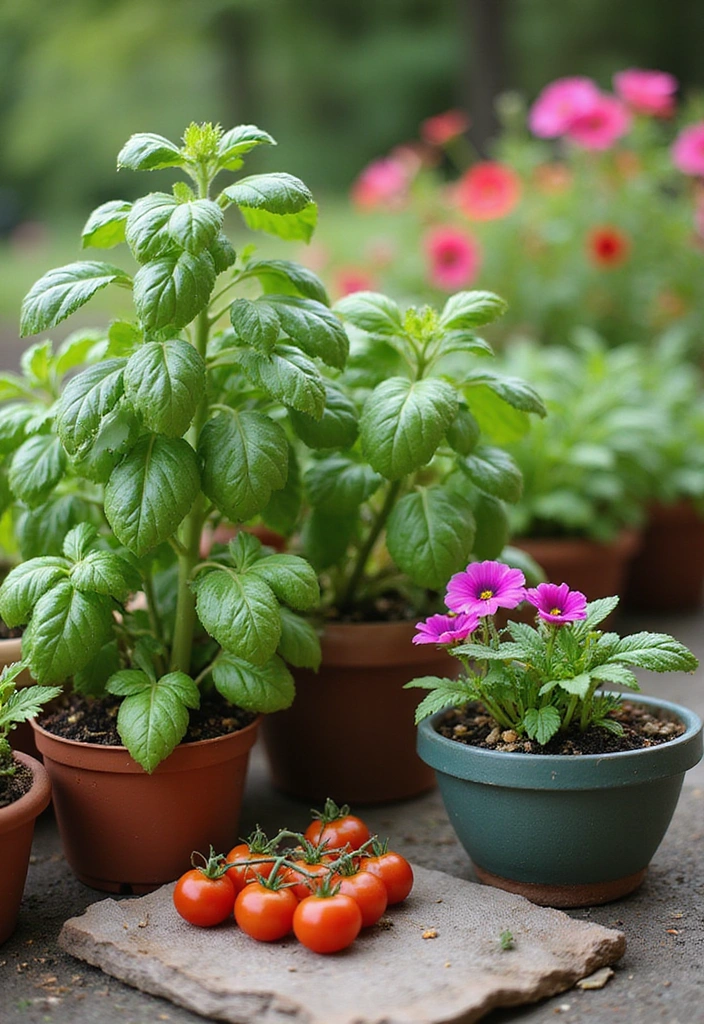
Why not make your patio garden as functional as it is beautiful? Incorporating edible plants allows you to enjoy fresh herbs, vegetables, or even fruits right from your patio!
Herbs like basil, parsley, and mint grow well in pots and require minimal space. For a fun twist, consider dwarf varieties of vegetables like cherry tomatoes or peppers that not only look beautiful but also provide delicious produce.
To make it even more interesting, try planting edible flowers such as nasturtiums or pansies that can add a splash of color to your dishes as well.
Keep in mind:
– Use quality potting soil with nutrients for healthy growth.
– Ensure proper sunlight for all your edible choices.
– Regularly check for pests to keep your plants thriving.
With a touch of care, your patio garden can become a culinary delight, adding freshness to your meals right from your outdoor sanctuary.
8. Layer Your Planting
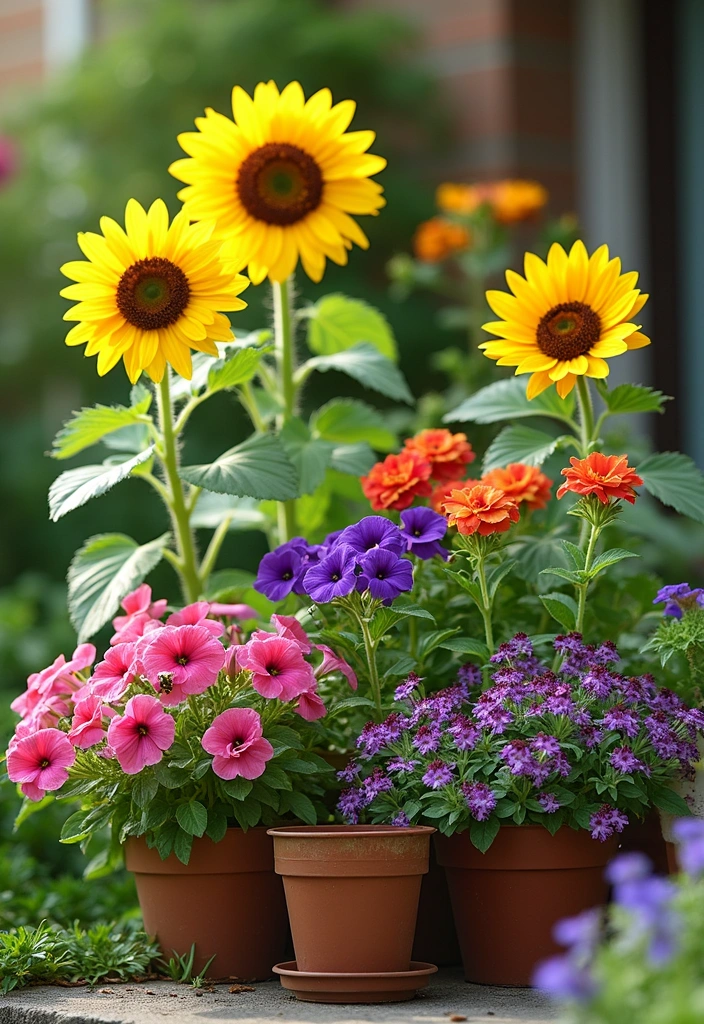
Layering your plants can create depth and make your patio garden appear more vibrant and lush. This technique involves placing taller plants in the back and shorter ones in the front, helping to create a visually pleasing arrangement.
In small spaces, layering can also help to maximize sunlight exposure for all your plants. Consider using a mix of shrubs, annuals, and perennials to create a dynamic look.
For instance, tall sunflowers or hollyhocks at the back, with medium-sized petunias in the middle, and trailing lobelia spilling over the edges creates a beautiful visual effect.
Tips for layering include:
– Consider the growth patterns of your chosen plants.
– Use colorful flowers that complement each other for a harmonious look.
– Increase texture variety with foliage types.
Layering not only enhances the aesthetic, but it also promotes healthy growth as each plant is spaced for their needs.
9. Create a Theme for Your Garden
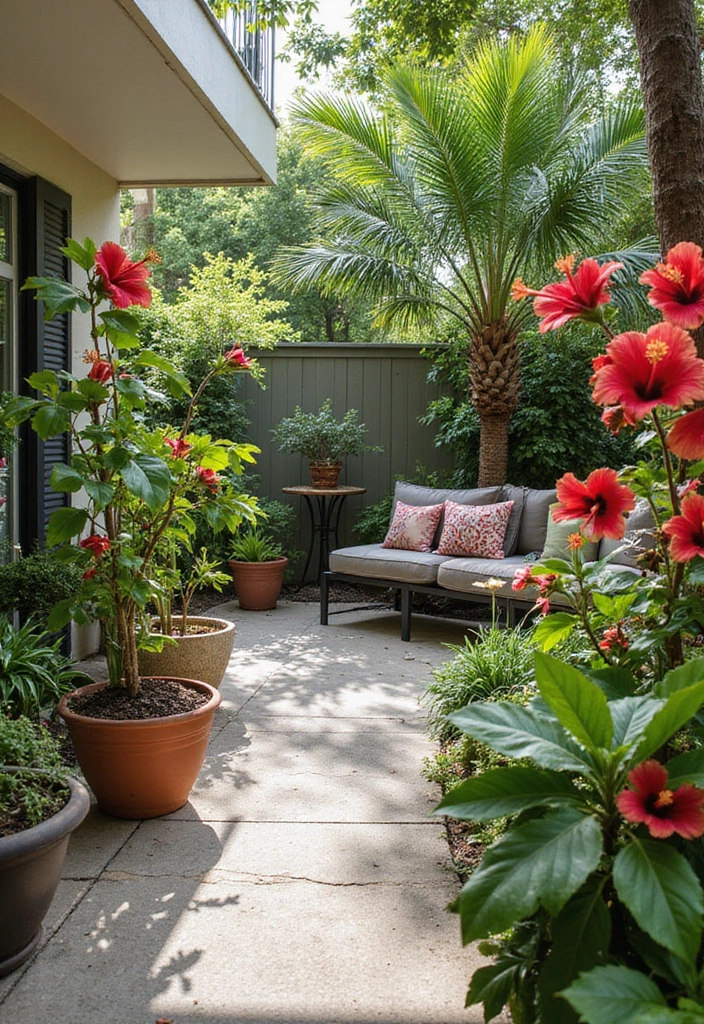
Having a theme for your patio garden can give it a unique identity and make it more enjoyable. Whether you prefer a tropical vibe, rustic charm, or a modern aesthetic, a theme can guide your plant selections and decor choices.
For a tropical feel, consider colorful hibiscus, palms, and vibrant outdoor decor. A rustic theme could involve using reclaimed wood planters and wildflowers, while modern styles might favor sleek planters and monochrome color palettes.
Be mindful that your theme should reflect your personal taste and lifestyle. It can also guide your choice of furniture and accessories, making the whole space feel cohesive.
Tips to establish your theme:
– Stick to a color palette that aligns with your theme.
– Use decor elements like lanterns and cushions that complement the style.
– Regularly refresh your theme seasonally for a dynamic look.
This cohesive approach makes your patio garden feel intentional and inviting.
10. Add Textures and Layers
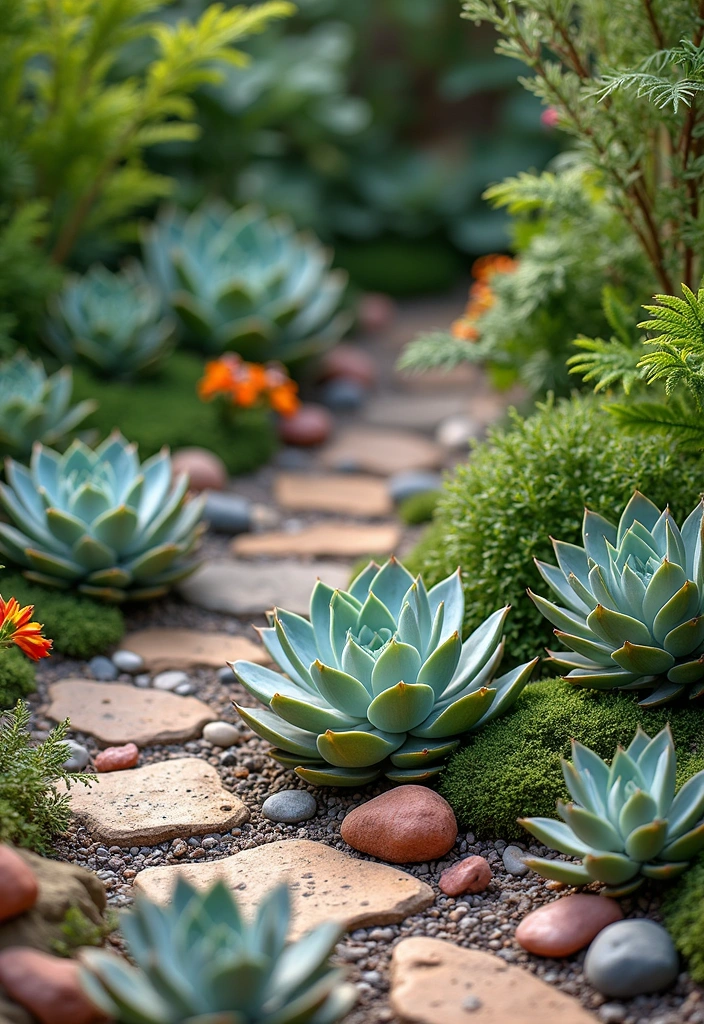
Creating a visually appealing patio garden goes beyond just colors; textures play a significant role too! Mixing various plant materials can enhance the overall aesthetic while providing a rich sensory experience.
Combine smooth-leaved plants like succulents with rough-textured options such as ferns or ornamental grasses. Consider adding decorative stones, driftwood, or textured pots to further enrich the visual appeal of your gardening space.
Layering is key; play with the heights and forms of your plants for depth and movement. Swapping out pots seasonally or adding new decorative elements can keep your garden fresh.
Consider these tips:
– Mix soft and spiky plants for visual balance.
– Use decorative stones in pathways or as ground cover.
– Regularly change out decor elements to keep things exciting.
Textures and layers create a multi-dimensional space that invites exploration and enjoyment.
11. Incorporate Art and Decor
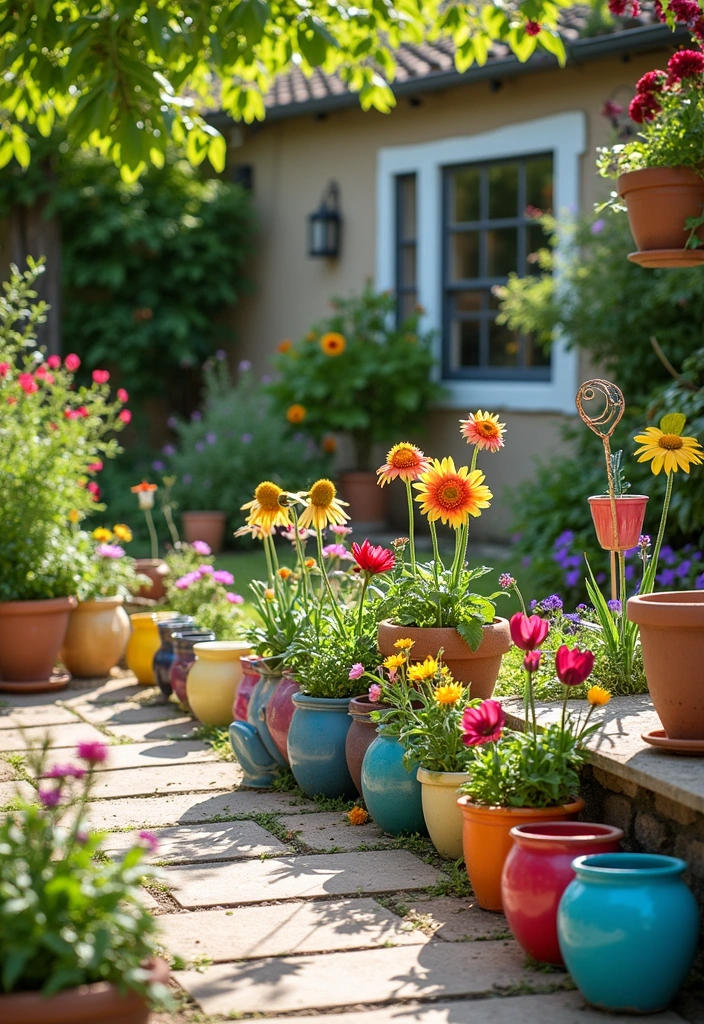
Art and decor can add personality to your patio garden! Whether it’s sculptures, painted rocks, or hanging art, these elements elevate the space beyond just plants.
Consider adding wall art that complements your theme or quirky garden gnomes to spark joy. Use decorative stakes or wind chimes to attract attention and create a serene atmosphere.
Don’t hesitate to display your creativity—painting old pots or using reclaimed materials for a DIY project can infuse character into your garden.
Additional tips include:
– Ensure decor items are weather-resistant.
– Keep art and decor in harmony with your plant choices.
– Rearrange decor regularly to give the space a refresh.
Art and decor can transform a simple patio into a vibrant expression of your personality!
12. Ensure Good Lighting
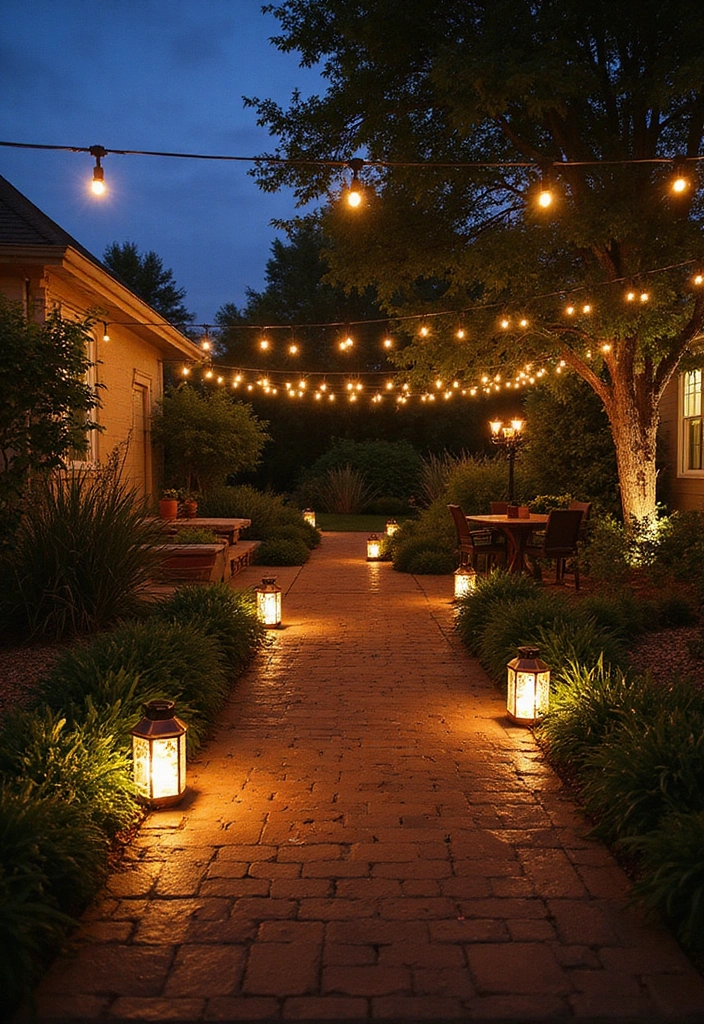
Lighting can truly transform your patio garden. Whether it’s for functionality or ambience, the right lighting can enhance your outdoor space dramatically.
Use solar-powered lanterns to line pathways or string lights to create a magical atmosphere in the evening. Spotlights can shine on particular plants, drawing the eye to their beauty, while candlelight can add a cozy vibe.
Consider mixing various light sources for a layered effect that creates depth. Experiment with different placements and styles to find what works best for your garden design.
Remember:
– Use energy-efficient options to save on power costs.
– Incorporate smart lighting for convenience.
– Position lights to highlight key features of your garden.
Good lighting can make your garden inviting at all hours, turning it into a favorite evening retreat.
13. Plan for Maintenance
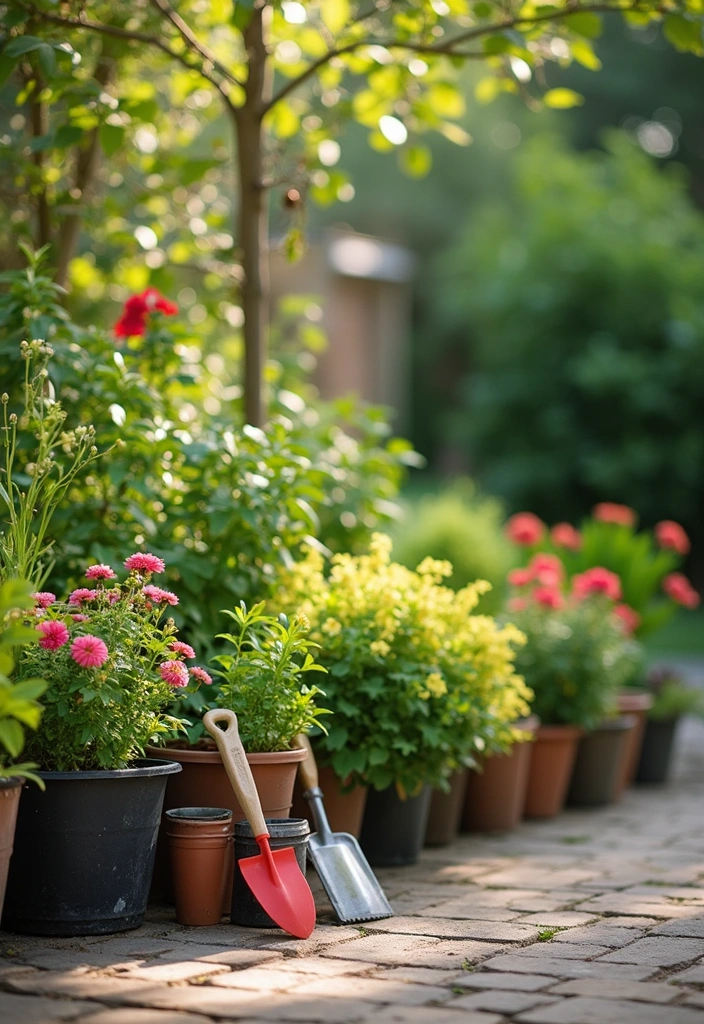
A gorgeous patio garden requires some upkeep, and planning for maintenance is essential for its longevity. Think about how much time you can dedicate to keeping your garden in tip-top shape.
Choose low-maintenance plants if you’re short on time; succulents and native plants often require less care. Regularly check for weeds, pests, and dead leaves to keep your space looking pristine.
Set a schedule for watering and fertilizing to ensure your plants thrive. Need a little help? Consider using self-watering systems or hiring a gardener if your space allows it.
Tips for easy maintenance include:
– Group plants with similar needs for easier care.
– Use mulch to retain moisture and suppress weeds.
– Keep a handy gardening kit with essential tools.
By planning for maintenance, you can enjoy your beautiful patio garden without feeling overwhelmed.
14. Seasonal Changes and Rotations
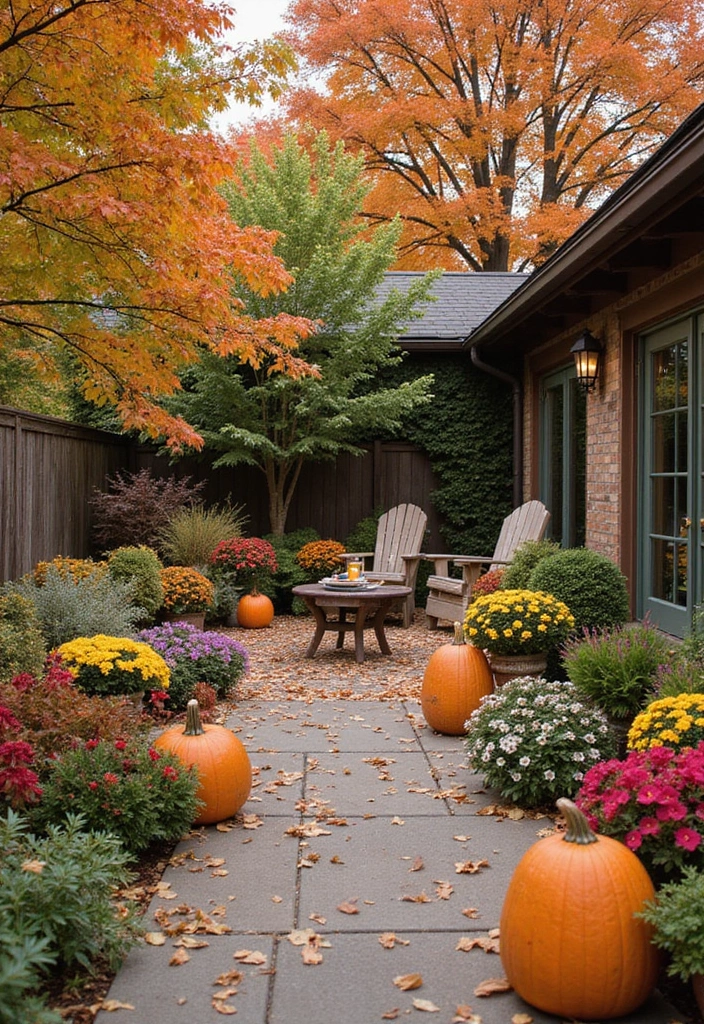
Keeping your patio garden fresh and exciting can be achieved through seasonal changes and plant rotations. Different seasons bring various colors, textures, and blooms that can invigorate your space.
Consider swapping out summer flowers for autumn favorites like chrysanthemums or pansies. You can also change up plants based on your cooking needs, such as growing basil in summer and thyme in winter.
Seasonal decorations like fall pumpkins or winter wreaths can also enhance the overall aesthetic of your patio.
Tips for easy rotations:
– Keep a seasonal calendar for planting and harvesting.
– Monitor your plants for their life cycles to determine the best time to switch.
– Store unused plants properly to keep them healthy for next season.
Embracing the seasons in your patio garden keeps the space lively and engaged year-round.
15. Celebrate Your Garden!
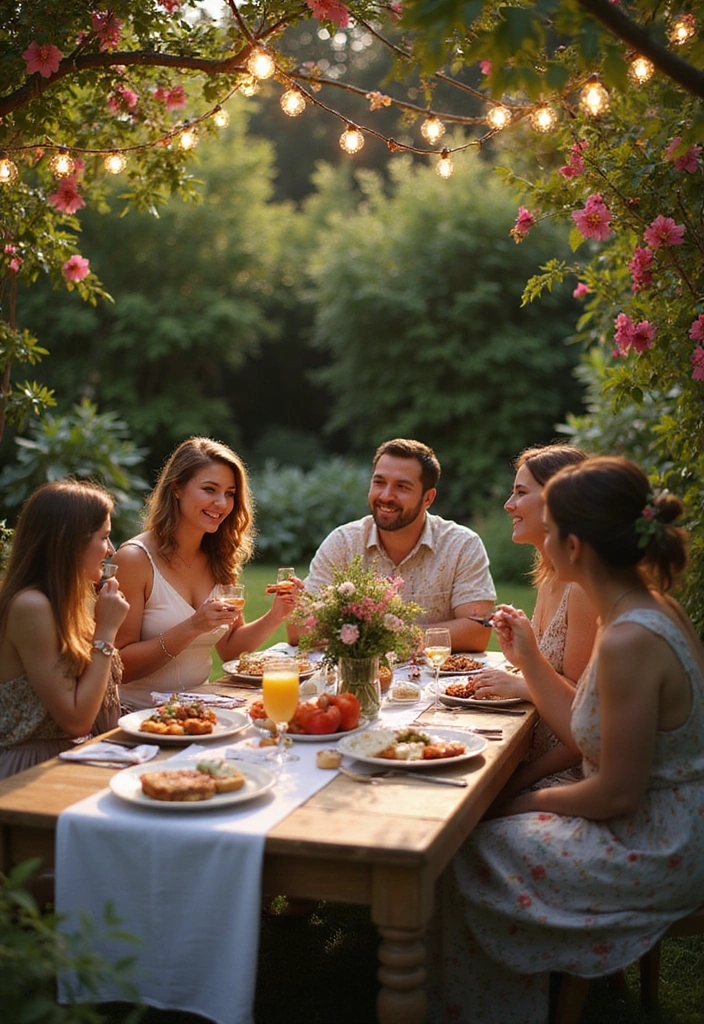
Your patio garden is a labor of love, and celebrating it is the final step in creating a fresh oasis. Host a small gathering with friends or family to showcase your hard work and enjoy the beauty of your garden.
Set the scene with outdoor dining, using your homegrown herbs and vegetables in delicious dishes. Share stories about the journey of creating your garden, and encourage others to take their green thumb adventures.
Consider adding personal touches like hand-painted signage or garden-themed decorations to make the gathering even more special.
Tips for celebrating:
– Create a cozy atmosphere with lighting and seating.
– Prepare signature drinks using herbs from your garden.
– Encourage guests to share their gardening tips or ideas.
By celebrating your garden, you bring joy not just to yourself but also to those who share in the experience with you.
Conclusion
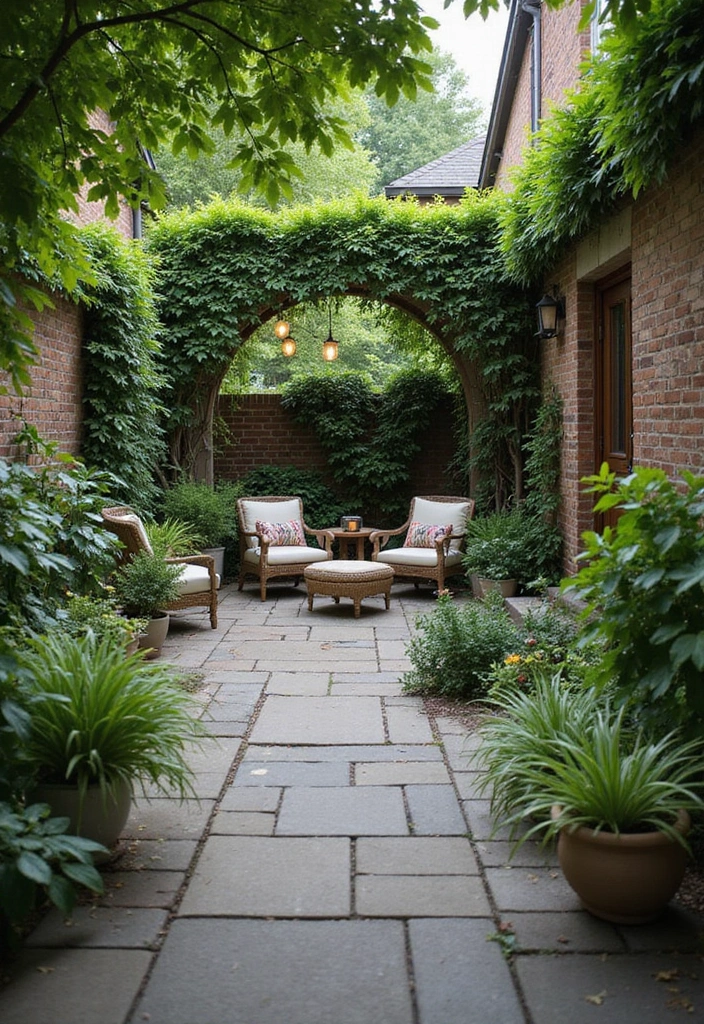
Creating a fresh patio garden in small spaces is a rewarding journey that brings beauty and tranquility to your home.
With the right plants, creative decor, and a bit of planning, your little oasis can flourish and provide joy for years to come. Don’t forget to enjoy every moment spent in your garden, celebrating your hard work and the beauty it brings.

